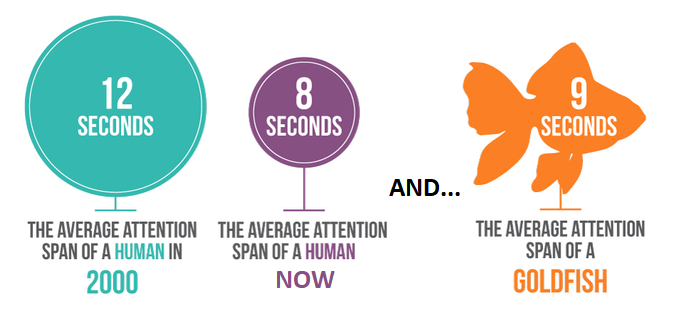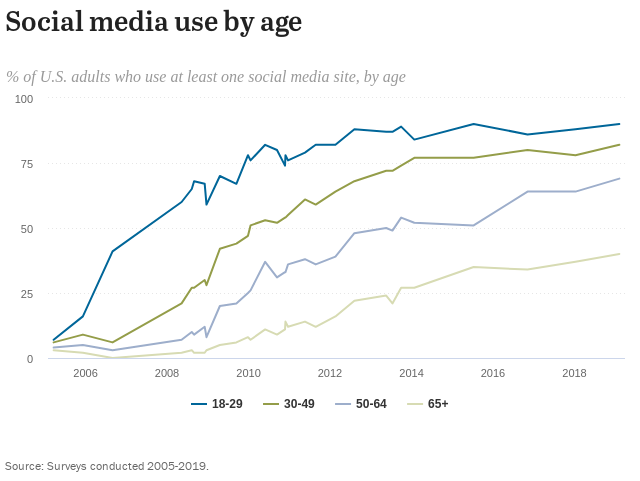Every year we have to predict the future, but honestly the top 3 things are already happening. They will just gain more popularity and traction for marketers.
While content still rules, and how it is delivered is important, what is still missing, and matters most in my mind is “what is the data telling us?” Defining success on social media, and making actionable tactics from those insights are what marketers need to provide clients.
The 30-second summary:
- It’s time to go beyond just “likes” when measuring the success of your social media campaign. Dig deeper to define effective content that engages your audience
- The fastest growing demographic on social media may surprise you
- Conversational AI can make a good way to future-proof your business for 2020
Ephemeral content is effective content
Ephemeral content is something that is available only for a short duration and disappears afterwards. Instagram and Snapchat Stories are perfect examples of this type of content. According to a Cision report, Goldfish and humans practically have the same attention span.

Today, people’s attention spans are short and the way they like to consume content has also changed. This is why content formats like Stories have become popular i.e. Instagram Stories. They are short, engaging, and addictive in a way that people can spend hours scrolling through one Story after another.

Seniors are not to be underestimated on Social Media
More and more seniors have taken to social platforms over time: Pew found that, in 2017, 34% of seniors used social media, up from 8% in 2009.
According to Nielsen, older demographic usage of social media is not only broadening, but deepening. The proportion of total weekly media time spent on social media by the 50+ crowd increased 64% between 2015 and 2016. It was the largest increase seen across any demographic.
But the year is 2020, where do we stand?
As more Americans have adopted social media, the social media user base has also grown more representative of the broader population. Young adults were among the earliest social media adopters and continue to use these sites at high levels, but usage by older adults has increased in recent years.

If you combine the age demographics of 50-64 and 65+ brackets, you have a force to reckon with.
Similarly, the vast majority of Millennials (86%) say they use social media, compared with smaller shares among older generations. While the share of Millennials who say they use social media has remained largely unchanged since 2012, the shares of Gen Xers, Boomers and Silents who use social media all have increased by at least 10 percentage points during this period.

Conversational AI
Conversational AI refers to the use of messaging apps, speech-based assistants and chatbots to automate communication and create personalized customer experiences at scale
AI is a key component of the popular social networks you use every single day. For example:
- Facebook uses advanced machine learning to do everything from serve you content to recognize your face in photos to target users with advertising. Instagram (owned by Facebook) uses AI to identify visuals.
- LinkedIn uses AI to offer job recommendations, suggest people you might like to connect with, and serving you specific posts in your feed.
- Snapchat leverages the power of computer vision, an AI technology, to track your features and overlay filters that move with your face in real-time.
The biggest benefit of having a conversational AI solution is the instant response rate. Answering queries within an hour translates to 7X more likelihood of converting a lead. Customers are more likely to talk about a negative experience than a positive one.
Practical Usage of AI in Social Media
1. User Engagement
Users behavior has changed drastically in the last two decades. You cannot expect them to wait long after submitting a form or question. Users demand instant responses whether it is your website or customer support. With conversational AI-powered chatbots, you can nurture leads in real-time. Users don’t have to wait after submitting a lead form as they instantly get a call from the sales department, which will try to close the lead. Moreover, these chatbots can also deliver personalized messages, offer special deals and coupons to keep your audience hooked.
2. Social Media Marketing
More and more brands will use chatbots to offer customer support on social media channels. These chatbots can enhance the customer journey by answering customer queries, push personalized content and automate the process of customer outreach. This means that customers can get satisfactory responses to their questions on social media without leaving their favorite platforms.
Businesses will use instant messaging apps such as Facebook Messenger for one-to-one interaction with their customers. By using chatbots, brands can not only save their time, resources but can also free up their social media team, so they can focus on creating strategies and design successful campaigns while putting customer-service into autopilot.